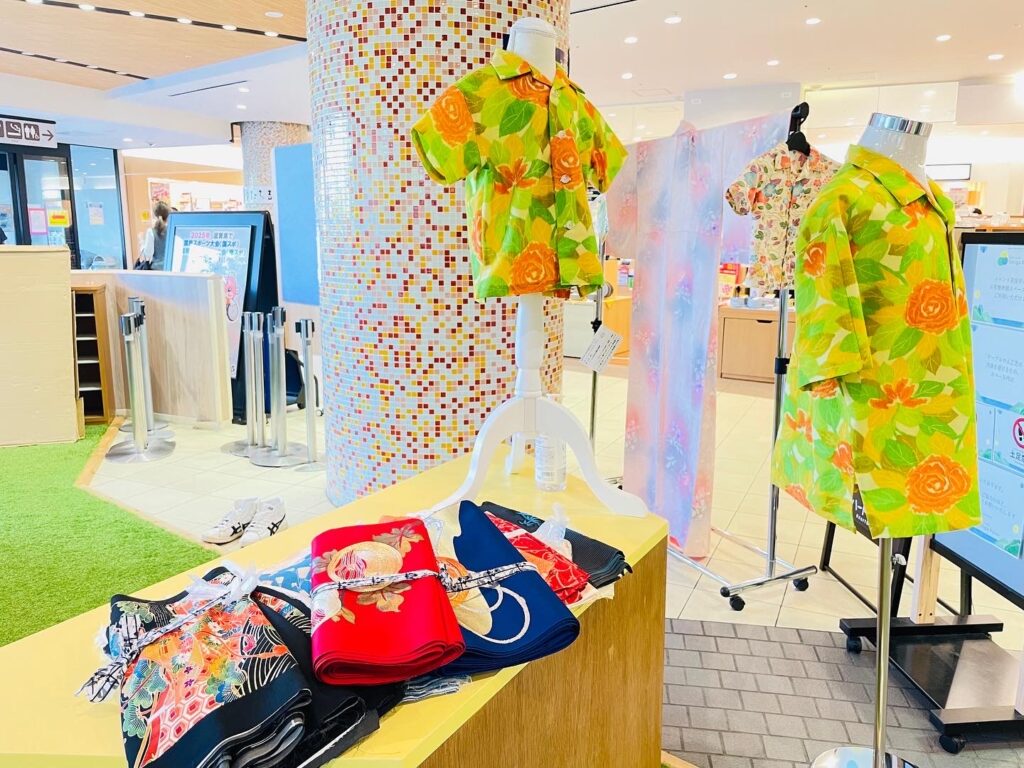interview
Ai Hiraki
Representative of the brand Heart & Assist, which mainly sells nursing care clothing. Based on her experience as an acupuncture and moxibustion masseuse working in the field of nursing care, she has developed a number of clothes that are easy to wear, even for elderly people. Many of the items are easy to wear yet fashionable.
Meet Ai Hiraki, a visiting masseuse who works closely with the caregiving industry on a daily basis.
Through her work, she has gained valuable insights into the challenges and opportunities that come with being involved in the caregiving industry.
In this article, we interview Ai Hiraki to learn about what inspired her to start her own brand, the unique challenges she faces in the caregiving industry, and her outlook for the future.
The reason why we started Heart&Assist

——— Can you tell us what led you to start Heart&Assist?
Ai Hiraki (hereinafter referred to as Hiraki): I opened an acupuncture and massage clinic as an individual in 2001. I hold qualifications for acupuncture and massage therapy and anma-shiatsu therapy, and I also work by visiting people who are bedridden or paralyzed on one side.
Among those who receive such care, many have trouble putting on or taking off clothes, especially those who are bedridden. Of course, there are clothes that place great emphasis on functions that make it easier to change clothes, even for those who are bedridden.
However, there were still few clothes that were made to encourage patients to take care of their appearance and to take that step. So, with suggestions from my patients, I started looking for various manufacturers to create such clothing.
——— Did you start with remaking kimono?
Hiraki: We didn’t start using kimono from the beginning.
Originally, because we were active in Shiga Prefecture, we made western-style clothes using the local industry, Takashima-Chijimi.
Takashima-Chijimi is made of cotton, so it is easy to wash and has a minimal burden on the skin.
About a year after starting my activity, someone who knew that I was making caregiving clothing asked me if I could make clothes from a kimono. So, I began to use kimono.
Although there is an attachment to kimono, there were no family members who wore kimono, and they were unsure what to do with them.
When visiting other patients’ homes, I heard many voices saying they couldn’t dispose of them because they held precious memories. So, I began to think about effectively utilizing kimonos, which are a valuable resource.
What kind of brand is Heart&Assist?

——— Are you currently primarily focused on remaking kimono?
Hiraki: Currently, I am producing care clothing using Takashima-Chijimi for those who require nursing care and have difficulty putting on or taking off regular clothing. I am also producing casual Western-style clothing made from kimono fabric mainly for those who can dress themselves.
Both types of clothing are designed to be easy to put on and take off, but since kimono fabric does not stretch, I recommend Takashima-Chijimi clothing for those who require nursing care.
——— Are you mainly selling clothes for the elderly?
Hiraki: At first, I only sold clothing to elderly people.
However, some people said they didn’t need it because they thought they could manage with what they already had. I heard many reasons for this, such as “life is too short to waste on fashion” and “I don’t want to start being fashionable at this age,” so there was a lot of negativity.
But I could see that they weren’t happy with that decision.
Looking at their expressions, I strongly felt that as long as they are alive, they don’t have to give up personal expression.
At the same time, I thought that if people in other generations could know about it, even if the person themselves were negative, they might receive it as a gift or something.
That’s why I wanted to make people more aware of the existence of clothing that is easy to put on and take off, and makes people feel beautiful.
So we started designing clothing with the perspective of what we would like to wear ourselves.
Challenges of promoting Kimono Casual in the caregiving industry

——— Have there not been any stylish clothes for care-giving until now?
Hiraki: Personally, I wondered why there weren’t any clothes that combine functionality and fashion, not just focusing on functionality. However, when I actually tried it, I realized that it wasn’t even recognized in the first place.
Starting from the point of “what’s so important about clothes being easy to put on and take off,” the recognition of the importance of that aspect is difficult and has become a hurdle.
In the care-giving field, I feel that it is quite difficult to provide care for the personal aspect of the person receiving care, in addition to the minimum necessary support for their daily life, due to a shortage of human resources.
It is possible that taking 5 or 10 minutes to change clothes may make it difficult for people to be proactive about changing their clothes, so if the hurdle of difficult movement is lowered with clothing that is easy to put on and take off, and if it is designed to further uplift one’s mood, it may encourage people to try on clothes themselves.
Things she value in Heart&Assist activities

——— Do you have any particular preferences or important things that you focus on?
Hiraki: Especially as people get older, many want to hide their body shape, so I am conscious of not placing too much emphasis on fashion. Clothes that are easy to put on and take off can also help cover up your body shape.平木:特に年を重ねると、スタイルを隠したいと考えている方が多いので、、おしゃれに重きを置きすぎないことを意識しています。脱ぎ着が楽な服というのには、スタイルをカバーできるというのも含まれているんですよ。
Also, rather than becoming more passive in self-expression as you age, I want people to be more proactive through their clothes.
Future prospects

——— Can you tell us about your future prospects and plans?
Hiraki: In terms of kimono, I want to change the concept of discarding them.
I think it’s undeniable that existing kimonos are something that will eventually be thrown away. But I don’t want people to just think of them as something to dispose of. I hope to do something related to kimonos that can change this.
Another thing is that I want to collaborate with people from various professions. For example, in our current activities, apparel companies may be able to indirectly help us. I think that wearing fashionable clothes can sometimes motivate people to go outside and be more proactive in rehabilitation. We are also struggling with a shortage of human resources, but there may be professions that can help us with that.
In this way, I think that problem solving is not just limited to ourselves, but can also come from unexpected places, so I am trying to increase our connections with various people.
——— Are there any industries or professions that you would like to connect with?
Hiraki: Especially in terms of clothing, food, and housing. There are companies that are already working on food and housing, so I would like to share more information with them.
However, since it is a field that is only used for people who require care, I think that it is not well known to those who do not need it.
Nevertheless, I think that it is a path that young and healthy people can take as well. Knowing about these things from a young age can increase our knowledge and reduce the likelihood of getting into trouble later on.
Therefore, while connecting with people in the clothing, food, and housing industries, I want to convey this information to young people as much as possible.
Conclusion

In this interview, we spoke with Ms. Hiraki from Heart&Assist about the inspiration behind their brand and their interest in creating Kimono Casual wear from traditional Japanese clothing. We also discussed the unique challenges faced by those working in the caregiving industry, as well as their future goals.
For those interested in comfortable and stylish clothing inspired by traditional Japanese fashion, Heart & Assist’s products are definitely worth checking out.
They hold monthly exhibitions and sales in commercial facilities throughout Shiga prefecture, and the latest information can be found on their website and Instagram.
Thank you, Hiraki-san , for taking the time to do this interview with us.
And thank you to everyone for watching until the end.










コメント